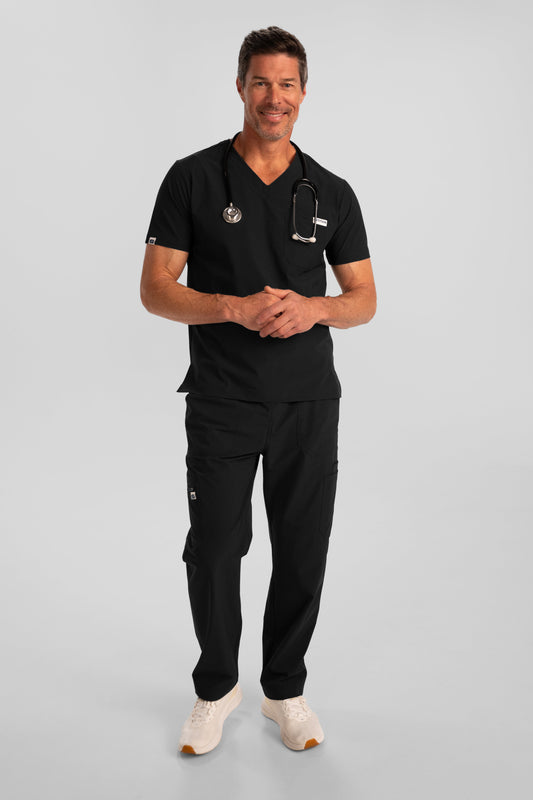Nursing has always been a profession rooted in tradition and history. One aspect that has undergone a significant transformation over the years is nursing attire. Gone are the days of nurses donning crisp white dresses, replaced instead by the ubiquitous scrubs we see in hospitals and healthcare facilities today. But when exactly did nurses stop wearing dresses? Let's take a closer look at the historical context, practicality, and cultural shifts that led to this transition.
When Did Nurses Stop Wearing Dresses? The Historical Context of Nursing Uniforms
In the early days of nursing, dresses were the norm. This can be attributed to the historical perception of nurses as caretakers and members of religious orders. The traditional nursing uniform, characterized by a long, starched white dress, apron, and cap, symbolized purity, professionalism, and dedication to patient care.
However, as nursing became recognized as a distinct profession and the role of nurses expanded beyond the hospital setting, the need for a more practical and functional uniform arose. The transition from dresses to scrubs was not sudden but rather a gradual process influenced by numerous factors.
One significant factor that contributed to the shift from dresses to scrubs was the advancements in medical technology and the increasing emphasis on infection control. Nurses working in operating rooms and other high-risk areas found that dresses were not conducive to maintaining a sterile environment. As a result, scrubs, with their comfortable and easily washable fabric, became the preferred choice for healthcare professionals.
Moreover, the women's liberation movement of the 1960s and 1970s played a crucial role in challenging traditional gender norms, including dress codes. Many female nurses began to question the practicality and symbolism of the traditional nursing dress, advocating for more gender-neutral and functional attire. This cultural shift, combined with the evolving healthcare landscape, ultimately led to the widespread adoption of scrubs as the standard nursing uniform.
From Tradition to Modernity: Why Nurses Shifted from Dresses to Scrubs
One of the key reasons behind the shift from dresses to scrubs was the recognition of the importance of cleanliness and hygiene in healthcare settings. Nurses working in hospitals and clinics found it challenging to maintain pristine white uniforms amidst the demands of their profession. Stains, tears, and other signs of wear and tear could compromise the image of professionalism that nurses aimed to project.
Additionally, the increased focus on infection control and the adoption of sterile techniques in healthcare also played a role in the move towards scrubs. The ability to easily launder and sterilize scrubs made them a more practical choice, reducing the risk of transmitting infections between patients.
Moreover, the evolution of nursing as a profession also contributed to the shift to scrubs. As nursing became more specialized and nurses took on a wider range of responsibilities, the need for comfortable and functional attire became apparent. Scrubs, with their loose fit and breathable fabric, allowed nurses to move freely and perform their duties with ease, whether they were assisting in surgeries or providing bedside care to patients.
Another factor that influenced the transition to scrubs was the changing perception of uniforms in healthcare. While traditional white dresses were seen as a symbol of purity and professionalism, the practicality and versatility of scrubs began to outweigh the symbolism of traditional attire. The shift to scrubs represented a departure from outdated norms and a step towards embracing modernity and efficiency in healthcare settings.
When Did Nurses Stop Wearing Dresses and Embrace Practicality?
The transition from dresses to scrubs gained momentum in the 20th century. In the 1940s and 1950s, practicality became a driving force as nurses were faced with the challenges of wartime healthcare. The demands of nursing during World War II necessitated quicker, easier-to-clean attire that could withstand the rigors of their work.
By the 1960s, scrubs started to gain popularity in hospitals and healthcare facilities across the United States. This shift was further fueled by advancements in fabric technology, with the introduction of wrinkle-resistant and stain-resistant materials making scrubs more appealing to nurses.
As the healthcare industry evolved, so did the role of nurses. With a greater emphasis on infection control and hygiene, the transition to scrubs was a natural progression. The loose-fitting nature of scrubs allowed for better movement and comfort during long shifts, enhancing the overall well-being of nurses.
Moreover, the standardization of scrubs helped create a sense of unity among healthcare professionals. The uniform appearance not only promoted a sense of teamwork but also made it easier for patients to identify nurses in a busy hospital setting. This sense of cohesion and professionalism further solidified the place of scrubs in the modern healthcare landscape.
The Role of Hygiene and Safety in the Move from Dresses to Scrubs
The link between nursing attire and hygiene cannot be overstated. Scrubs, with their clean lines, minimal pockets, and easy-to-clean fabric, helped reduce the risk of harboring pathogens and the potential for cross-contamination.
Moreover, the occupational hazards that nurses faced in healthcare settings led to the demand for clothing that provided better protection. Scrubs, with their loose fit, allowed for ease of movement during physical tasks and provided a barrier against bodily fluids and other hazardous substances.
It is interesting to note that the transition from traditional dresses to scrubs in healthcare settings was not just a practical one but also a symbolic shift. The crisp, uniform appearance of scrubs helped create a sense of professionalism and unity among healthcare workers, fostering a cohesive team environment.
Furthermore, the evolution of scrubs over time has seen advancements in fabric technology to enhance comfort and functionality. Modern scrubs now come in a variety of colors and styles, catering to individual preferences while still maintaining the core principles of hygiene and safety.
When Did Nurses Stop Wearing Dresses? Key Moments in the Evolution of Nursing Attire
Several key moments in history mark significant strides in the transition from dresses to scrubs. In the 1970s, the Air Force developed the first surgical scrub suit, emphasizing the importance of a standardized and practical uniform for healthcare professionals.
Further advancements were made in the 1980s when manufacturers started producing colorful scrubs, allowing nurses to express their individuality while adhering to infection control protocols. This shift also reflected a changing perception of nursing as a profession, no longer bound by rigid uniform standards.
As the 1990s rolled in, the influence of popular culture began to impact nursing attire. Medical TV shows like ER and Grey's Anatomy showcased healthcare professionals in trendy and stylish scrubs, sparking a demand for fashionable options in the real world. This led to the emergence of designer scrubs made from high-quality fabrics with flattering cuts, catering to the growing desire for both comfort and style in the workplace.
By the early 2000s, the concept of antimicrobial scrubs gained traction as healthcare facilities sought innovative ways to combat the spread of infections. These specialized scrubs were designed to inhibit the growth of bacteria on the fabric, promoting a cleaner environment and reducing the risk of cross-contamination among patients and staff. The integration of technology into nursing attire marked a significant shift towards prioritizing not only comfort and aesthetics but also health and safety in the healthcare setting.
How Scrubs Became the New Standard: The Practical Advantages Over Dresses
Scrubs quickly became the new standard in nursing attire due to their numerous practical advantages over dresses. These advantages expanded beyond hygiene and safety considerations and also addressed the comfort and mobility of healthcare professionals.
Firstly, scrubs are made of lightweight and breathable materials, allowing nurses to move freely throughout their shifts without feeling constrained. They also feature multiple pockets, ensuring easy access to necessary tools and equipment without the need for a separate bag or apron.
Secondly, scrubs are available in a wide variety of colors and styles, allowing nurses to showcase their personality and individuality while maintaining a professional appearance. This shift towards personalized scrubs fostered a sense of identity and pride among nurses.
Titan Scrubs: Leading the Way in the Evolution of Modern Nursing Attire
In the ever-evolving world of nursing fashion, Titan Scrubs has emerged as a pioneer in providing high-quality, stylish, and functional scrubs. With our commitment to innovation and unrivaled attention to detail, Titan Scrubs has become a trusted name among healthcare professionals.
Whether it's the latest fabric technology, trendy cuts, or an extensive range of colors, Titan Scrubs understands the unique needs and preferences of modern nurses. With our scrubs, nurses can confidently navigate their demanding roles while showcasing their personal style.
In conclusion, the transition from dresses to scrubs in nursing has been a transformative journey driven by practicality, hygiene, safety, and cultural shifts. Scrubs have become the new standard in nursing attire, offering numerous advantages over dresses while allowing nurses to express their individuality. As we look back on the history of nursing uniforms, it becomes apparent that the move from dresses to scrubs symbolizes the evolution of nursing as a profession and the continued commitment of nurses to provide exceptional care.







